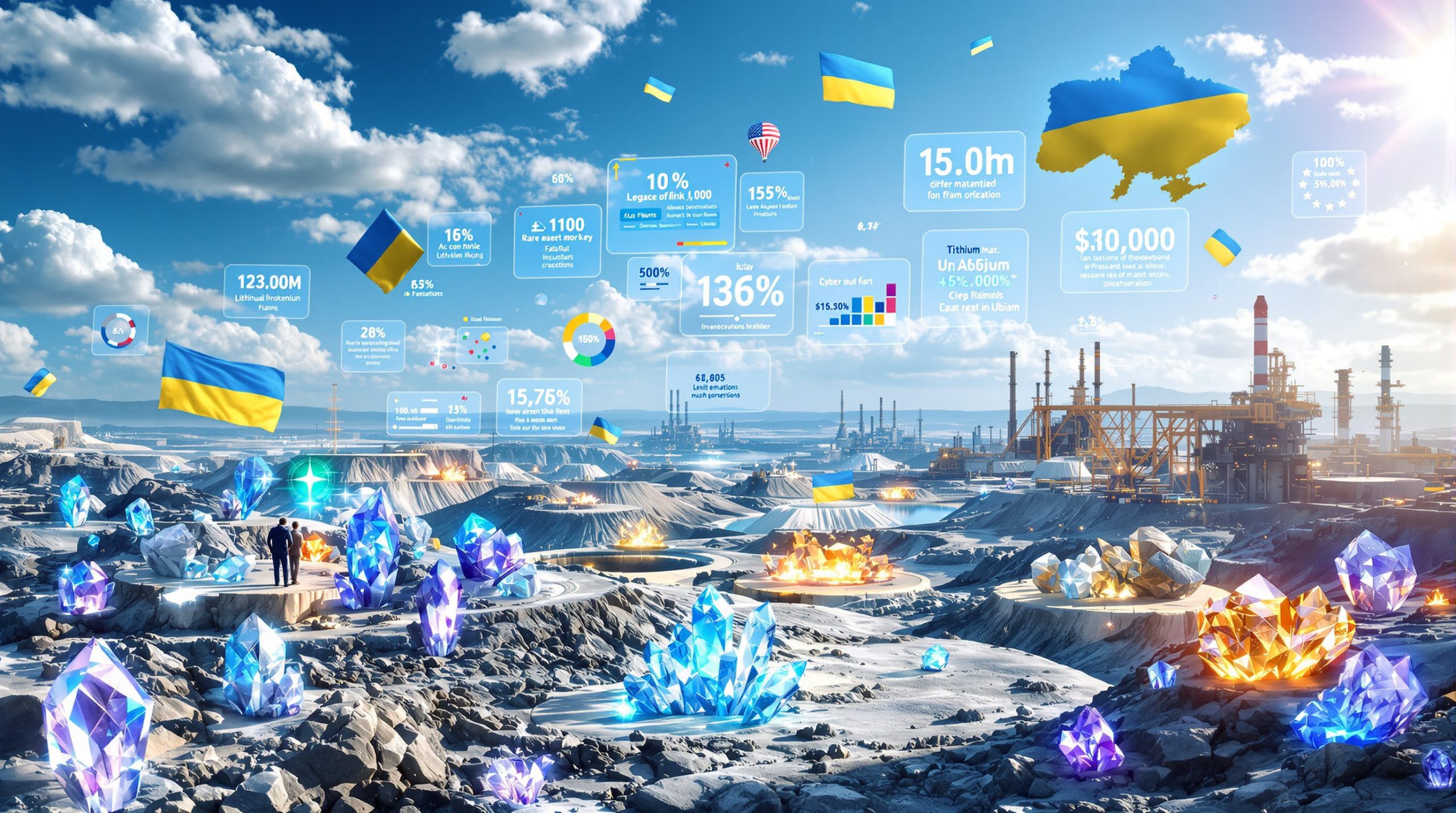Understanding the Tariff's Immediate Market Effects
The implementation of a 50% tariff on imported copper has created unprecedented disruptions across global copper markets. This policy intervention, classified under Section 232 as a national security measure, triggered immediate price volatility with COMEX copper futures surging to $5.90 per pound—representing a 17% single-day gain that broke through established resistance levels.
The most significant development has been the emergence of a 25% premium between COMEX futures and LME benchmark prices, effectively fracturing the normal arbitrage mechanisms that typically maintain global price alignment. This pricing dislocation reflects not just supply concerns but signals a fundamental reconfiguration of international copper trading flows as tariffs' impact on copper prices continues to reverberate through markets.
What Drove the Implementation of Copper Tariffs?
The copper tariff implementation stems from resource nationalism concerns and domestic supply security priorities. With the United States relying on imports for approximately 36% of its copper demand, the policy aims to reduce dependency on foreign suppliers while stimulating domestic production.
Major copper suppliers to the US market include:
| Country | Percentage of US Copper Imports | Tariff Impact Level |
|---|---|---|
| Chile | 23% | High |
| Canada | 18% | Medium (USMCA member) |
| Mexico | 15% | Medium (USMCA member) |
| Peru | 12% | High |
| Others | 32% | Varies |
The magnitude of the tariff signals a structural shift rather than a temporary trade measure, potentially creating permanent alterations to global copper supply forecast patterns.
How Are Structural Demand Trends Shaping the Copper Market?
Beyond immediate policy volatility, copper demand remains anchored to irreversible electrification trends. Industry forecasts from multiple sources project global copper demand will increase by approximately 40% through 2035, driven by three primary factors:
Renewable Energy Infrastructure Requirements
Wind and solar installations require significantly more copper per megawatt than traditional power generation:
- Offshore wind: 8-15 tons of copper per megawatt
- Onshore wind: 2.5-6 tons of copper per megawatt
- Solar PV: 2-5 tons of copper per megawatt
- Traditional power: 1-2 tons of copper per megawatt
Electric Vehicle Manufacturing Expansion
Transportation electrification creates substantial copper demand growth:
- Electric vehicles require approximately 4x the copper content of internal combustion vehicles
- Average ICE vehicle: 20-25 kg of copper
- Average battery electric vehicle: 80-85 kg of copper
- EV charging infrastructure adds additional copper requirements
Grid Modernization and Data Center Growth
Digital infrastructure and grid upgrades drive additional consumption:
- Data centers: Power requirements expanding with AI applications
- Grid modernization: Requires substantial copper for transmission and distribution
- Energy storage systems: Additional copper requirements for battery connections and management systems
These structural demand drivers create a baseline consumption floor that supports long-term copper price prediction trends regardless of short-term policy volatility.
Why Are Stable Mining Jurisdictions Gaining Investment Priority?
The tariff announcement has accelerated institutional investor rotation toward mining assets in jurisdictions offering both political stability and infrastructure advantages. This jurisdictional arbitrage is creating distinct valuation tiers based on geopolitical risk assessments.
What Makes Tier-1 Mining Jurisdictions Attractive?
Several factors contribute to premium valuations for assets in stable jurisdictions:
- Regulatory predictability: Established permitting frameworks reduce development timeline uncertainty
- Infrastructure access: Existing power, water, and transportation networks lower capital requirements
- Skilled labor availability: Access to experienced mining professionals reduces operational risk
- Community engagement frameworks: Established consultation processes with local communities
- Environmental standards: Clear guidelines for environmental management and reclamation
How Are Canadian Copper Projects Positioned?
Canada has emerged as a preferred destination given its USMCA membership and established mining regulatory framework. Projects in Canadian jurisdictions benefit from:
- Proximity to US markets with potential tariff advantages
- Established Indigenous consultation processes
- Environmental assessment frameworks with clear timelines
- Strong mining history and infrastructure
- Political stability and rule of law
As highlighted by Jason Bontempo, CEO of Gladiator Metals, their Canadian properties offer significant advantages: "We have excellent highway and road access and trail access. Excellent draw on labor resource and being so close to the city and we can pretty much work all year round."
What Advantages Do European Operations Offer?
European copper operations provide distinct strategic benefits:
- Direct access to European decarbonization markets
- Regulatory alignment with EU critical materials legislation
- Established mining history and infrastructure
- Reduced geopolitical complexity compared to emerging markets
- Alignment with ESG investment mandates
What Production Milestones Are Advancing the Copper Supply Pipeline?
Several copper projects are advancing rapidly toward production, providing near-term catalysts for increased supply. These developments span multiple stages of the mining lifecycle:
Plant Start-Ups and First Production
Some operations are nearing commercial production:
- Johnson Camp Mine in Arizona has announced the start-up of its solvent extraction plant and electrowinning circuit
- First copper sales expected in September 2025
- Production capacity of up to 25 million pounds of finished copper cathode annually
- Advanced processing technology reducing environmental footprint
Robert Winton, SVP Operations at Gunnison Copper, noted: "With the start-up of the SX-EW plant ahead of schedule we have achieved another major step towards our targeted copper cathode sales in September this year."
Resource Expansion and Definition
Resource drilling campaigns are expanding known copper deposits:
- MPD copper-gold project in British Columbia filed its initial Mineral Resource Estimate for four of seven mineralized zones
- Indicated Mineral Resources of 56.4 million tonnes grading 0.42% copper equivalent
- Inferred Mineral Resources of 240.7 million tonnes grading 0.33% copper equivalent
- Multiple zones remain open for expansion
New Discovery Potential
Exploration programs continue generating discovery value:
- La Huerta South surface discoveries approximately 3km from main workings
- New mineralization zones at Cowley Park with the first drill hole targeting depth extension below 200m
- Previously unobserved disseminated bornite and chalcopyrite within wide mineralization zones
- Multiple projects demonstrating significant exploration upside beyond current resource estimates
Ben Turney, CEO of Kavango Resources, emphasized the direct connection between resource drilling and infrastructure investment: "A successful campaign will underpin the investment case for the placement of the 200tpd production plant at Bill's Luck, as we work to scale up to a 250tpd gold production operation by the first half of 2026."
How Have Capital Markets Responded to Copper Tariffs?
The copper tariff impact on global market dynamics triggered immediate outperformance among copper equities, with many companies recording double-digit gains following the policy announcement. This equity market response reflects both direct leverage to copper pricing and recognition that policy-driven supply constraints could benefit domestic and allied production sources.
Financing Activity Acceleration
Several copper-focused companies have strengthened their financial positions:
- Warrant exercises generating proceeds for project advancement
- Strong participation from existing long-term shareholders
- Strategic investments from major mining companies
- Increased institutional investor interest in copper equities
ATEX Resources, for example, strengthened its financial position by generating CAD$9.75 million in proceeds through warrant exercises from existing long-term core shareholders, demonstrating strong confidence in project prospects.
Valuation Premium for Operational Excellence
In an environment of policy-driven price volatility, mining companies with robust cost structures and capital-efficient development pathways hold significant advantages:
- All-in sustaining costs becoming critical valuation metrics
- Capital intensity ratios gaining greater prominence
- Companies with low environmental footprints receiving premium valuations
- Management teams with proven execution capabilities attracting premium multiples
Hayden Locke, CEO of Marimaca Copper, highlights this positioning: "Marimaca has the potential to be a low capital intensity, high margin, copper company with heap leaching processes that are 38% less carbon intensive than traditional processing while utilizing recycled seawater supply that avoids fresh water consumption."
What Investment Strategies Are Emerging for Copper Exposure?
The combination of policy volatility and surging copper demand requires careful risk management and strategic positioning. Several copper investment strategies have emerged:
Jurisdictional Diversification Strategy
Focus on companies operating across multiple stable jurisdictions:
- Natural hedging against country-specific political risks
- Exposure to different regional market dynamics
- Reduced permitting and development concentration risk
- Ability to optimize production based on regional advantages
Development-Stage Targeting
Prioritize investments in projects with clear pathways to production:
- Completed feasibility studies demonstrating economic viability
- Established infrastructure access reducing capital requirements
- Clear permitting timelines with major milestones identified
- Production potential within 2-3 years to capture current price strength
Operational Excellence Focus
Invest in companies demonstrating superior operational metrics:
- Low all-in sustaining costs providing margin protection
- Capital-efficient development models reducing financing risk
- Proven management teams with successful track records
- Innovative processing technologies improving recovery rates
ESG Positioning Advantage
Target projects with strong environmental and social credentials:
- Reduced freshwater consumption through recycling or seawater use
- Lower carbon intensity processing methods
- Established community relationships and benefit-sharing agreements
- Alignment with increasing ESG investment mandates
What Are the Long-Term Implications for Global Copper Markets?
The scale of the proposed copper tariff and its classification as a national security measure suggest this represents a more permanent shift in trade patterns rather than temporary volatility. Several long-term implications are emerging:
Regional Trading Bloc Formation
Copper markets are evolving toward regional trading structures:
- North American copper ecosystem with USMCA advantages
- European copper market with EU critical materials focus
- Asia-Pacific trading relationships with different pricing mechanisms
- Potential for multiple benchmark prices rather than single global reference
Strategic Partnership Development
Companies are forming vertical integration relationships:
- Mining companies partnering with end-users for offtake agreements
- Technology providers investing in mining assets
- Downstream manufacturers securing supply chains
- Government strategic investments in critical mineral assets
Technology Acceleration
Processing innovation gaining increased investment:
- Advanced leaching technologies improving recovery rates
- Reduced energy consumption processing methods
- Increased automation reducing labor costs
- Enhanced recovery from lower-grade resources
Navigating the Transformed Copper Landscape
The copper tariff impact on global market dynamics has fundamentally transformed the investment landscape by intersecting policy-driven supply disruption with accelerating structural demand from the global energy transition. While short-term volatility creates both opportunities and risks, the underlying drivers of copper demand remain firmly anchored to irreversible electrification trends.
The most significant opportunities lie with companies that combine favorable jurisdictional positioning, robust operational metrics, and clear pathways to near-term production. As the market evolves toward regional trading blocs and strategic partnerships, investors who position themselves with companies offering operational excellence, jurisdictional advantages, and strategic flexibility will be best positioned to benefit from copper's essential role in the global energy transition.
Further Exploration:
Readers interested in learning more about global copper market dynamics can also explore related educational content from S&P Global's analysis of the potential 50% US import tariff and how it is reshaping market structures.
Ready to Stay Ahead of Major Mineral Discoveries?
Discover actionable investment opportunities with Discovery Alert's proprietary Discovery IQ model, which transforms complex ASX announcements into real-time alerts for significant mineral discoveries. Visit our discoveries page to understand how major copper discoveries can lead to substantial returns and begin your 30-day free trial today.




